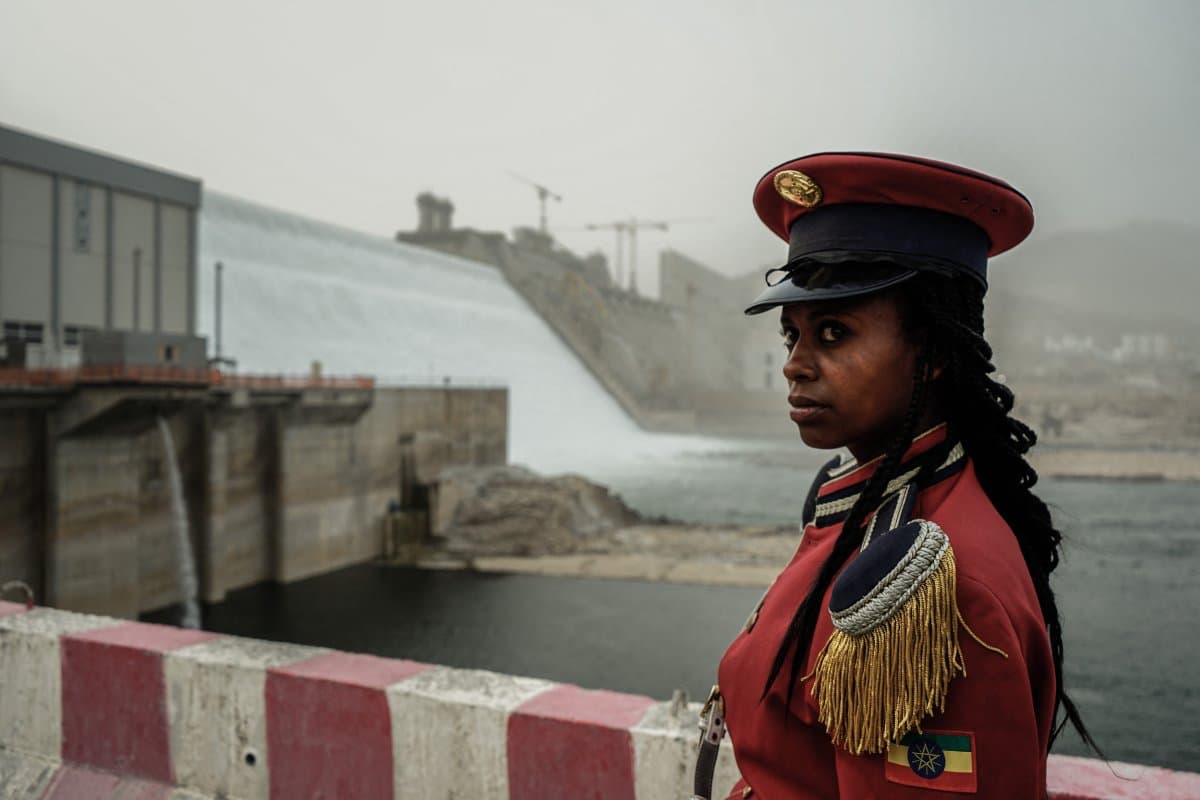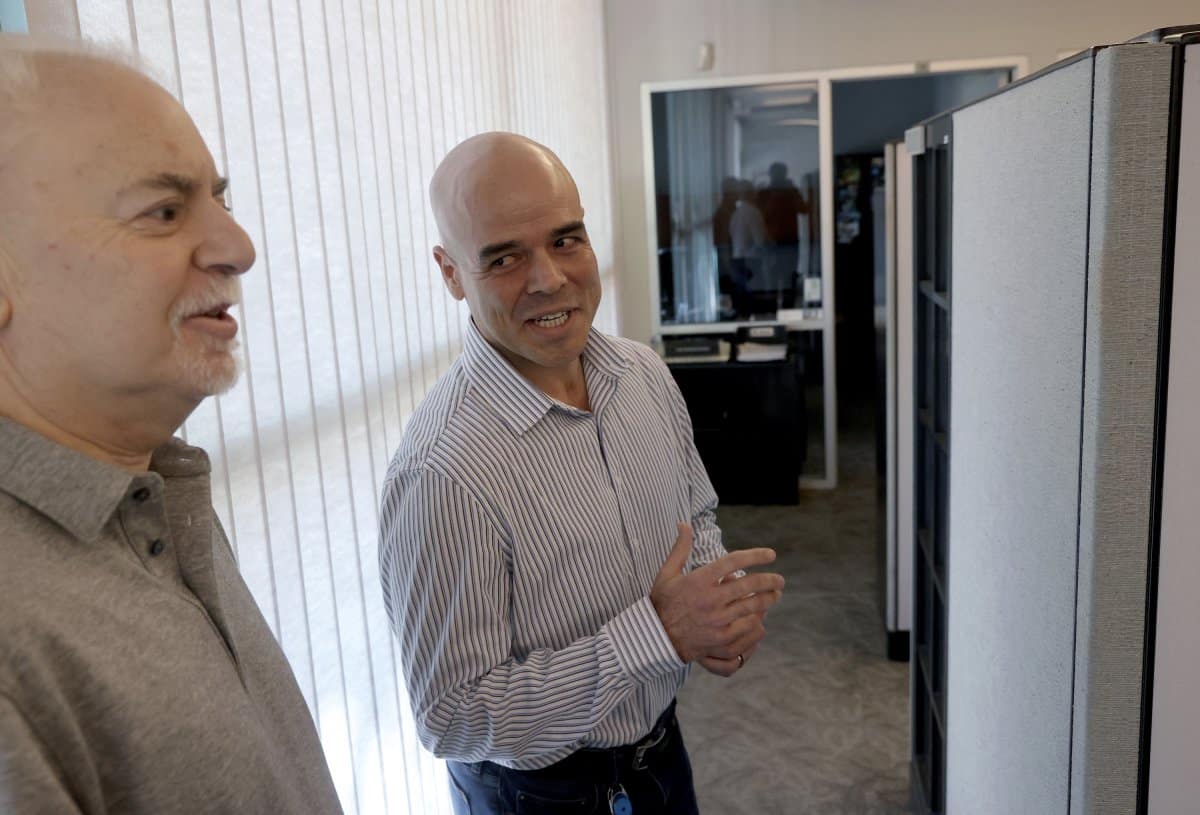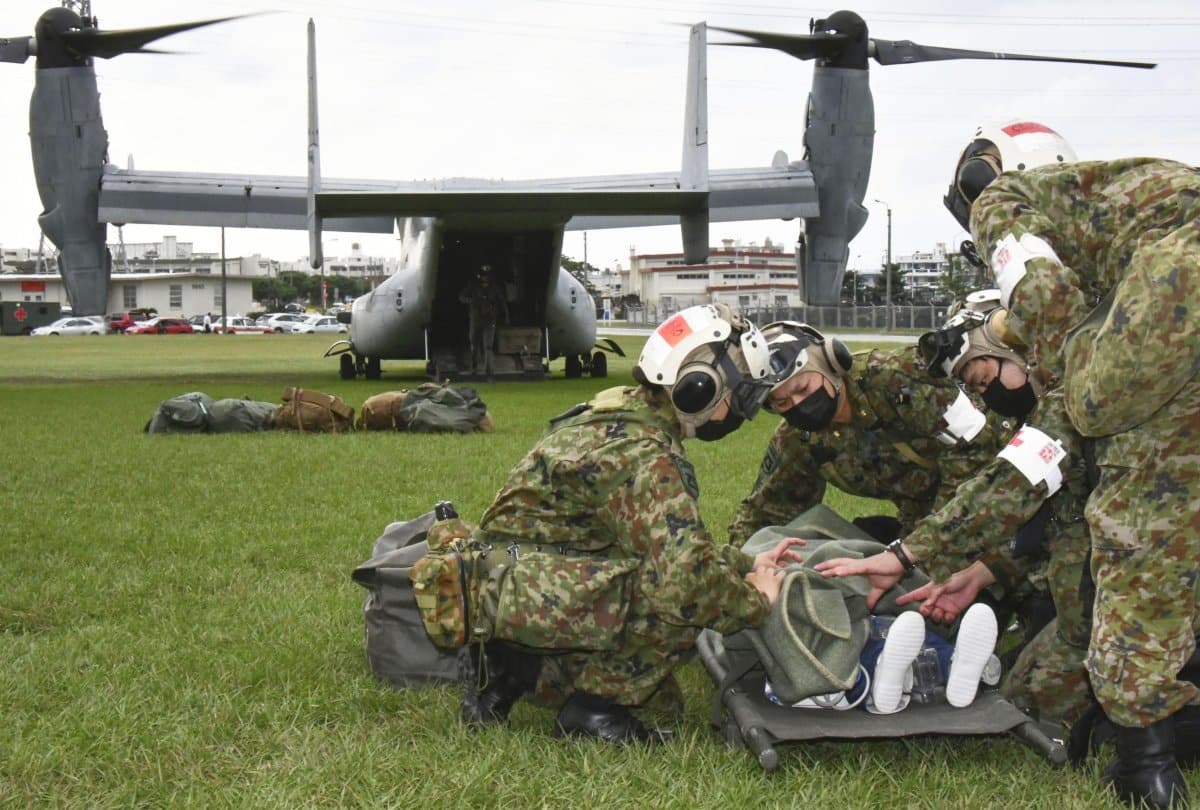Satellite images shared with Newsweek show the construction progress made on the Grand Ethiopian Renaissance Dam (GERD), the controversial hydroelectric dam causing tension between three African nations.
The GERD project began with the goal of boosting Ethiopia’s energy production and fostering economic growth. The $4.6 billion project is a central part of Ethiopia’s plans to become a major exporter of energy in Africa. It was reported to be 95 percent complete in March and the Ethiopian government is optimistic that the dam will be fully operational by 2025.
The reservoir has a capacity of 74 billion cubic meters, and the dam is designed to be a critical source of electricity for millions.

A member of the Republican March Band poses for photo before at the ceremony for the inaugural production of energy at the Grand Ethiopian Renaissance Dam (GERD) in Guba, Ethiopia, on February 20, 2022. New satellite imagery shows the progress that has been made on the dam.
AMANUEL SILESHI/AFP/Getty Images
In July 2020, the first phase of filling the reservoir commenced, and in August 2020, the water level increased to 540 meters.
The dam produced electricity for the first time in February 2022, and delivered 375 MW to the grid. A second turbine of 375 MW was commissioned in August 2022, and a subsequent third and fourth 400 MW turbines were commissioned in August this year.
The first image shows the dam at an early stage of construction, taken in 2011 when construction first began on the project. The image shows an undeveloped area, and the brown landscape indicates an initial stage of construction. The Blue Nile River can be seen running through the center of the image.
The second image shows a developed view of the dam. The dam itself is visible along the Blue Nile River, and you can see the outline of infrastructure on the green landscape.
The first image shows the GERD Reservoir in January 2017. The reservoir is not filled, and their is little to no water being stored in the reservoir. The second image, taken over seven years later shows the GERD reservoir in April 2024. At this stage, the reservoir is shown to be much fuller, with the large dark areas showing water.
Why Is the Grand Ethiopian Renaissance Dam Controversial?
The GERD has been the focus of intense diplomatic negotiations, and tensions over the years.
The Nile River, flows through eleven countries, is a vital water source for Egypt, Sudan, and Ethiopia.
Egypt relies on the Nile for over 90 percent of its fresh water and has concerns that the dam will drastically reduce its water supply. Similarly, Sudan also has concerns about the regulation of water flow and the dam’s impact on its own agriculture and water management systems.
Egypt and Sudan have pushed for legally binding agreements which would ensure that Nile waters are equitably shared.
Though the Ethiopian government has expressed its hopes that the dam will be fully operational by 2025, the path to this is not a simple one.
Trilateral negotiations involving Ethiopia, Egypt and Sudan are stalling, and have been exacerbated by the ongoing civil war in Sudan.
Do you have a story we should be covering? Do you have any questions about infrastructure projects? Contact LiveNews@newsweek.com





